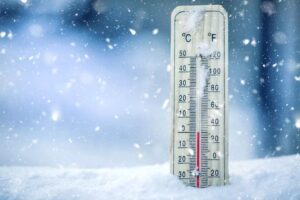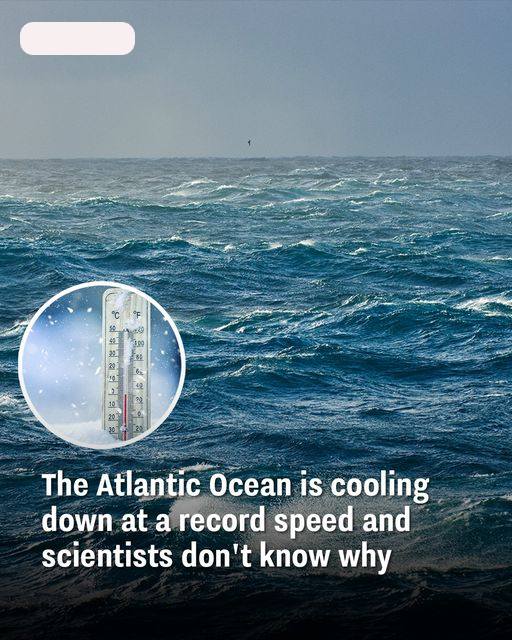This time of year, the ocean’s surface temperatures have dropped to an unusually low level.
Experts are unable to determine the cause of a weird abnormality that is occurring in the Atlantic Ocean.
The Atlantic Ocean’s surface temperature reached several new records in the past year, while global temperatures generally broke all previous records.
However, the surface temperatures of the Atlantic Ocean appear to have reversed over the past several months, with a record-breaking decline in temperature.
The National Oceanic and Atmospheric Administration (NOAA) reports that data indicates a decline in sea surface temperatures in the Atlantic since May.

The Atlantic seems to have been one or two degrees Fahrenheit colder than usual for this time of year.
Oceans are clearly vulnerable to several weather variations all year long. The Atlantic’s temperatures are typically predicted to climb at this time due to a complex weather pattern known as El Niño, as well as human-caused climate change.
El Niño is the term used to describe warmer-than-average ocean surface temperatures.
Since March 2023, the Atlantic Ocean has been breaking heat records, and a significant part of the cause for this is an exceptionally powerful El Niño that occurred in 2023 and 2024.
Yet, it now appears like La Niña, which occurs when ocean temperatures are abnormally cold a little too early, is set to take the place of El Niño in the Atlantic.
Both of these weather patterns are extremely complex and unpredictable because to their susceptibility to rainfall, solar warmth, and trade winds.

But experts are somewhat confused about the abrupt change in Atlantic temperatures and its assumed transition into La Niña, which is usually expected to begin in September.
“We have reviewed the array of potential mechanisms, and thus far, nothing fulfills the criteria,” University of Miami postdoctoral scholar Frans Philip Tuchen told the New Scientist.
There is little doubt that the environment is concerned about these extraordinary developments.
According to NOAA, variations in El Niño and La Niña weather patterns may affect rainfall in neighboring continents, and it has been demonstrated that Atlantic Niños raise the risk of storms in the vicinity of the Cape Verde islands.
NOAA’s Michael McPhaden claims that it might also have an impact on the ocean’s cycles, with the Atlantic perhaps playing “tug of war” to postpone the Pacific Ocean’s La Niña as the Pacific “tries to cool itself and the Atlantic tries to warm it.”
We’re still keeping an eye on whether the Atlantic is truly evolving into La Niña.
In the event that it occurs, local climate projections may alter for the balance of the year.


